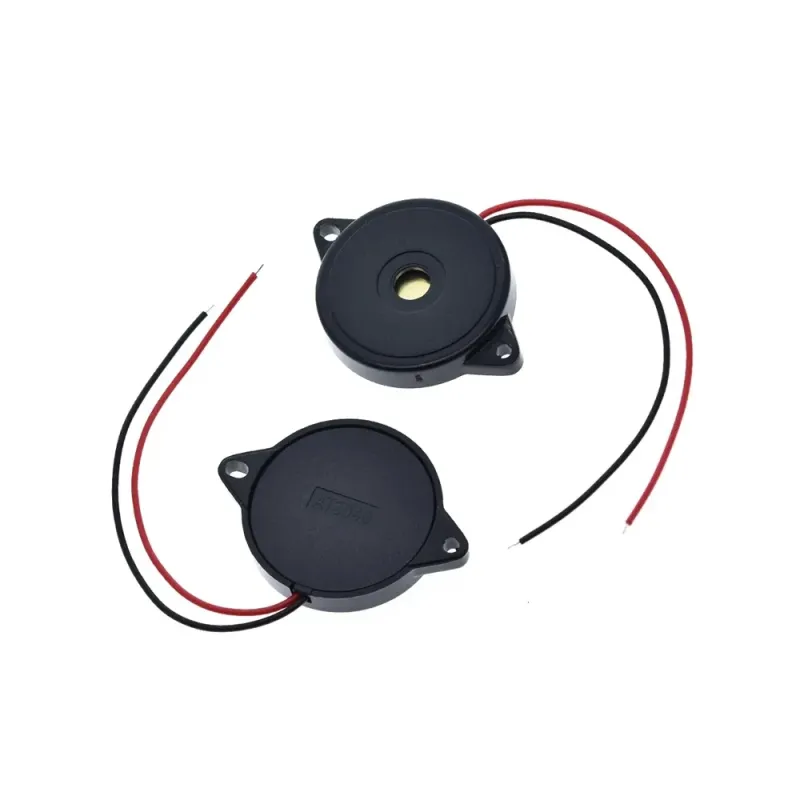
- Stock: In Stock
- Model: T122.ACT5
3 - 12V Buzzer Passive with Wire AT3040
The AT3040 is a specific type of passive buzzer, widely adopted in numerous electronic applications for the purpose of creating sound notifications. This document provides an in-depth look at the key characteristics, technical details, and common use cases of the AT3040 passive buzzer.
Key Attributes
- External Oscillator Requirement: As a passive buzzer, the AT3040 necessitates an external signal (like a PWM signal) for sound generation, as it lacks an in-built oscillating circuit.
- Broad Frequency Spectrum: It can generate a diverse array of frequencies, contingent on the input signal.
- Compact Design: It typically has a small footprint, making it ideal for integration into compact electronic devices.
- Energy Efficient: It operates with minimal power consumption.
Technical Details
- Model: AT3040
- Type: Passive buzzer
- Dimensions: Usually 12mm in diameter
- Operating Voltage: Typically functions at 3V to 12V DC (with a peak voltage of 30V)
- Frequency Range: Operates within a range of frequencies, defined by the external driving circuit (commonly between 1kHz and 5kHz)
- Sound Pressure Level: Roughly 85 dB @ 10cm (this may vary based on the driving signal and voltage)
- Current Consumption: Generally around 10-30 mA, contingent on the input signal

Common Use Cases
- Electronic Projects: Frequently used in Arduino and other microcontroller-based projects to generate alerts and sounds.
- Alarm Systems: Used in security systems to generate alert sounds.
- Home Appliances: Incorporated into devices such as washing machines and microwaves to provide status or alert sounds.
- Toys and Gadgets: Used in toys and electronic gadgets for sound effects and music.
Pros and Cons
Advantages
- Versatile Sound Production: Capable of generating a wide variety of sounds, tones, and frequencies, depending on the input signal.
- Cost-Effective: Typically affordable and readily available.
- Compact and Lightweight: Its small size makes it suitable for a variety of compact applications.
Disadvantages
- External Signal Requirement: Requires an external signal generator or microcontroller to produce sound, which can make circuit design more complex.
- Input Signal Dependence: The sound quality and volume are directly affected by the characteristics of the input signal.
Example of Arduino Usage
To utilize the AT3040 passive buzzer with an Arduino, it can be connected to a PWM-capable pin and the tone() function can be used to generate sound. Here is an example:int buzzerPin = 9; // Connect the buzzer to pin 9void setup() { pinMode(buzzerPin, OUTPUT);}void loop() { tone(buzzerPin, 1000); // Generate a 1kHz tone delay(1000); // Wait for 1 second noTone(buzzerPin); // Stop the tone delay(1000); // Wait for 1 second}
The AT3040 passive buzzer is a versatile and cost-effective component for sound generation in a wide range of electronic applications. It requires an external oscillating signal to produce sound, enabling it to generate a broad range of frequencies and tones. This makes it suitable for use in projects, alarm systems, home appliances, and toys. However, its compact size and low power consumption, while advantageous, also necessitate an external signal, potentially complicating circuit design.









